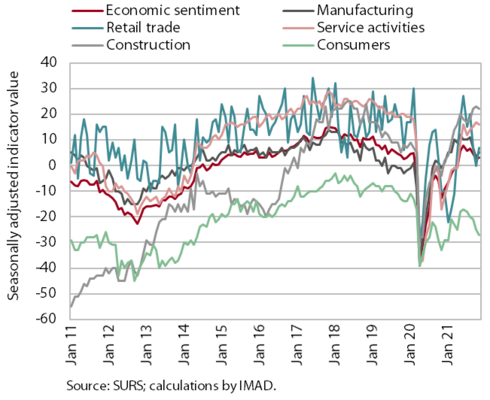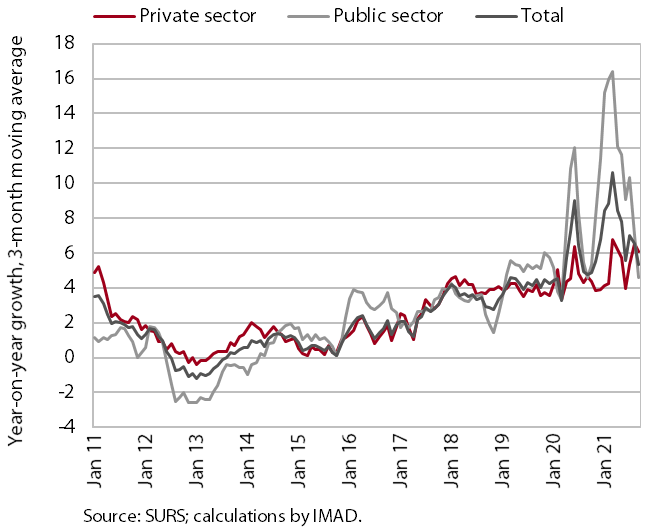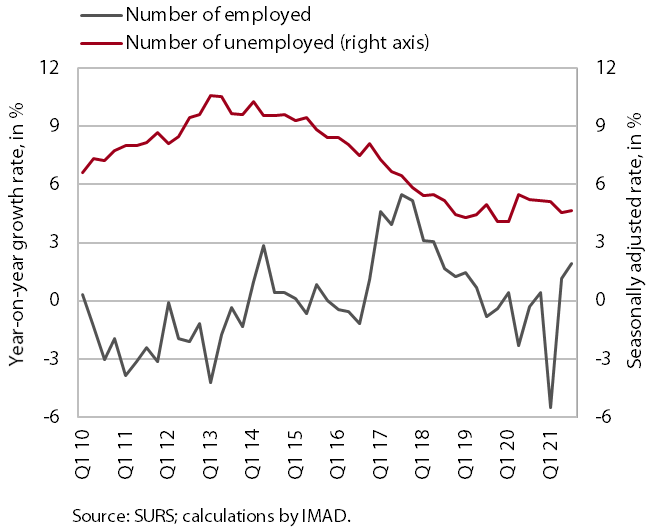Charts of the Week
Current economic trends from 22 to 26 November 2021: economic sentiment, wages, active and inactive population
The economic sentiment indicator rose in November due to higher confidence in manufacturing and retail trade, but its average value for the last two months points to a slowdown in the growth of economic activity in the last quarter. All confidence indicators remain at higher levels than in the same period last year, and compared to November 2019, confidence is lower only in services and among consumers, which is related to the epidemic situation and the measures taken to contain it. Labour market conditions remained favourable in the third quarter. The number of employed persons increased by 1.9% year-on-year, and by 1.6% compared to the third quarter of 2019. The volume of student work was up 65% year-on-year, which, given the base effect, also indicates strong growth in demand for various forms of work due to labour shortages. Shortage in certain sectors is already reflected in the year-on-year growth of the average gross wage in the private sector.
Economic sentiment, November 2021

The economic sentiment indicator improved in November, but its average value for the last two months points to a slowdown in the growth of economic activity in the last quarter. The monthly rise in the indicator was primarily attributed to increased confidence in manufacturing, as well as in retail trade. Most indicators improved in both sectors. Confidence in service activities, construction and among consumers declined slightly. Confidence in all sectors and among consumers was significantly higher in November than in the same period last year. It was also higher in most sectors than in the same period in 2019, except in services and among consumers, probably reflecting uncertainty about the epidemic situation and related measures.
Wages, September 2021

In September, year-on-year wage growth was 1% in the public sector, while it remained relatively high in the private sector (6.2%). In the first nine months, public sector wages were 10.1% higher than in the same period last year, but year-on-year growth has slowed since June due to the cessation of epidemic-related bonus payments. In the private sector, the average wage increased by 5.7% year-on-year in the first nine months, mainly due to the impact of the minimum wage increase at the beginning of the year. According to our estimates, wage growth in the private sector may already be affected by labour shortages.
Active and inactive population, Q3 2021

According to the survey data, labour market conditions remained favourable in the third quarter. The number of employed persons (according to the original data) increased by 1.9% year-on-year, and by 1.6% compared to the third quarter of 2019. The volume of student work increased by 65% year-on-year, which, given the base effect, also indicates strong growth in demand for various forms of work due to labour shortages. In the third quarter, the number of unemployed decreased by 11.3% year-on-year, while the survey unemployment rate decreased by 0.6% p.p. to 4.5%.
